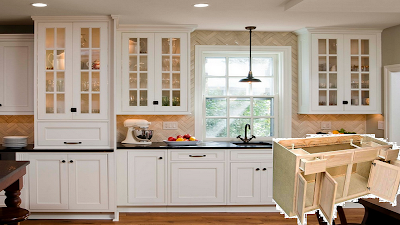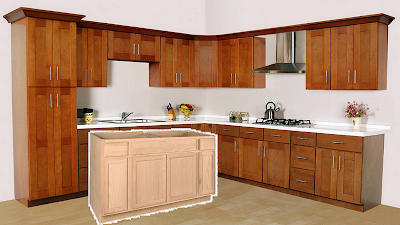How to Finish Unfinished Kitchen Cabinets
When I search in the google website, the company suggest:- How to stain unfinished cabinets from lowes
- Painting unfinished cabinets from lowes
- How to paint unfinished cabinets from home depot
- Finishing cabinets with polyurethane
- How to paint unfinished cabinets antique white
- How to finish inside of unfinished cabinets
- Stain colors for unfinished oak cabinets
- How to finish cabinets with lacquer
How to stain unfinished cabinets from lowes
If you buy unfinished cabinets from lowes you should stain it first before painting or installing to the wall or placed on your kitchen.
Related phrase to kitchen cabinets
- kitchen cabinet terminology
- components of a kitchen cabinet
- kitchen cabinet thickness
- cabinetry
- kitchen cabinet parts terminology
- kitchen cabinet in india
- kitchen cabinet material
- kitchen cabinets pictures
You can sand kitchen cabinets wood first. When you purchase your incomplete cupboards, you will undoubtedly purchase either birch, or oak.
Expel any tidy and apply a layer of conditioner. Apply the Wood Conditioner. Expel any clean and apply a layer of conditioner
Applying the stain by start applying the stain.
Painting unfinished cabinets from lowes
Pickling and whitewashing are two words for a similar methodology - safeguarding wood by covering it with lime. Present day finishers utilize paint or stain rather than lime to accomplish a whitewashed look, applying it to both completed and incomplete wood. At the point when the wood is uncovered, the impact is more profound and more genuine, yet whitewashing over a current complete maintains a strategic distance from the requirement for stripping.
On the off chance that your cupboards have never been done, you require just sand the wood with 120-coarseness sandpaper to open the grain. In case you're whitewashing existing cupboards, choose whether it's justified regardless of the exertion and wreckage to strip the wrap up. Whitewashing stains and paint douse further into exposed wood and give better scope, however you can get genuinely great scope on completed wood in the event that you clean it with trisodium phosphate and water to evacuate oils and oil and sand the complete with 120-coarseness sandpaper. You don't have to expel the complete - simply wear it thin and scrape it, so the whitewashing material can follow and cover up or mix with the current stain.
Whitewashing Materials
The best whitewashing paint is a level paint with a high solids content. You can purchase vigorously pigmented whitewashing and pickling stains, or you can basically utilize white groundwork. In case you're whitewashing incomplete or stripped knotty pine, oak or another wood with an uneven grain surface, consider shellac-based wood groundwork. It covers equitably and seals the grain to keep the regular oils from ties from seeping through. Groundwork likewise functions admirably on completed and scraped wood, however a whitewashing stain works similarly also. On the off chance that your objective is a grayish pickling impact, utilize either a pre-hued stain or add some color to white groundwork.
Applying the Whitewash
A whitewash doesn't need to enter profoundly to look great, yet it should be uniform. Before you whitewash incomplete wood, seal the grain with wood conditioner to forestall blotchiness around bunches and creases. The essential methodology for applying the whitewash is the same for both completed and incomplete wood. Brush the paint or stain on in even strokes, running with the grain of the wood; at that point wipe the surface with a perfect cloth - additionally following the grain. Both the measure of time you hold up before wiping and the measure of weight you utilize influence the haziness of the stain, so you might need to idealize your system on a test surface first. Continuously wear a respirator when painting or recoloring, and keep the windows open for ventilation.
Ensure the Finish
Regardless of whether you utilize groundwork or whitewashing stain, it will dry to an unappealing level complete that won't confront much mishandle. Ensure the complete and give it a sheen with maybe a couple layers of clear polyurethane. Brush the principal coat on straightforwardly finished the stain; sit tight for it to dry; at that point scrape it delicately with 220-coarseness sandpaper and apply a moment coat. In case you're after a weathered, old fashioned impact, take a stab at scraping the stain in key places previously you apply the unmistakable wrap up. You can likewise include antiquing impacts by utilizing a grayish stain as a coating. Brush it over the primary layer of complete; wipe off its vast majority; at that point apply the second layer of wrap up.
HOW TO PAINT UNFINISHED KITCHEN CABINETS
Painting kitchen cabinets requires tolerance and a touch of expertise.
Here are a few hints for making the procedure much smoother, earning awesome outcomes…
1. Make sure to pick the ideal paint.
Regular divider paint won't function as it can chip and it won't confront rehashed cleaning. Pick an alkyd lacquer. This will bring about a smooth wrap up.
2. Pick a shading that compliments your machines.
3. Expel the majority of the equipment.
Remove every one of the pivots, expel all screws, the magnets, and even the handle.
4. Set aside the opportunity to sort out the equipment.
Kitchen cabinets every entryway by number underneath where the pivot goes in the casing. Name a plastic baggie loaded with that entryway's equipment with a similar number. Put a little bit of painter's tape over the number on the entryway, so when the artistic creation is finished, you can expel the painter's tape and see the number (put behind the pivot if conceivable to disguise).
5. Pack your kitchen cupboards precise.
Gather paper packs or plastic canisters for every person "wash room like" bureau. Along these lines the substance can be come back to their home when the activity is finished. Stack little machines off the beaten path. Keep all much of the time utilized cookware you utilize most routinely on your cooktop. Place flatware in espresso mugs – one for every spoon, forks, blades, and serving utensils. Best to keep them helpful.
6. Know about the wreckage.
Move up floor coverings and clean up ledges as a safety measure.
7. Purchase or lease a handheld electric sander.
Sanding the greater part of the surfaces is fundamental for preliminary and paint to stick. An orbital detail sander will accelerate the procedure, prepare the surface, and require a great deal of the exertion off you.
8. Get a lot of sandpaper.
Purchase a lot of sandpaper to fit your palm sander. You'll experience it quick!
9. Purchase a considerable measure of tack fabrics.
Cleaning the surface is similarly as imperative as sanding it. Expel the tidy and flotsam and jetsam in the wake of sanding by wiping the surface with a tack material. The material will evacuate the greater part of the tidy and contain the chaos. You may likewise need to wear elastic gloves as the material will make your hands sticky.
10. Utilize oil-based preliminary.
Kilz comes very suggested; particularly the oil-based equation. With the oil-based recipe, the hardwood is more averse to stain painted white cupboards after some time (wood is known to "seep through" and give the paint a tinge of yellow, particularly if it's knotty wood). The oil-based recipe additionally makes an extremely all around clung surface to paint.
11. Have the preliminary tinted.
Prime in case you're painting a dull shading to bring down the possibility of requiring numerous coats.
12. Spread canvas drop fabrics around the zone.
While this procedure is reasonably without splatter — trickles and slips can happen.
13. Utilize plastic expendable paint plate.
Place the plastic expendable plate into your "genuine" plate so you can move on a firm surface. Toss it out when you're improved the situation simple tidy up.
14. Purchase additional brushes and rollers.
Polish paint cleans with cleanser and water. Oil-based paint tidy up is a problem. Spend the cash for a couple of additional brushes to ease the horrendous tidy up.
15. Utilize baggies or plastic wrap to seal rollers/brushes overnight.
In case you will work 2-3 days in succession — seal them up and the paint will remain wet on the swarms, prepared for the following day's worth of effort.
16. Pick the correct paint rollers.
Have one write for groundwork and one compose for paint. Search for words on the mark like "smooth bureau complete" and "reflect wrap up." High-thickness froth rollers work extraordinary for applying oil-based preliminary. For rolling the paint itself, low-snooze rollers really perform better after they sit, utilized, wrapped in plastic overnight. The rest reduces, it gets "softened up," and the complete is stupendous.
17. Painter's tape is your companion.
There are some definitely troublesome niches and crevices encompassing apparatuses where painter's tape proves to be useful.
18. Organize the bureau bases and the posteriors of the bureau entryways.
Sand everything at the same time in the event that you can. Next, prime and paint the bureau bases and rears of the entryways. Paint the fronts of the entryways last to keep the potential for additional scratching amid the procedure.
19. Apply light layers of paint to stay away from dribbles.
20. Include a polyurethane topcoat.
The additional coat completes off the surface. It likewise makes a hindrance for the paint complete to shield it from wear and tear. Utilize either a high-thickness froth roller or a "finishes and clears" low-snooze roller to apply the luxury kitchen cabinet topcoat equally.
21. Paint the internal parts of your cupboards.
Paint the upper cupboards as you'll be taking a gander at them each time you open the entryways. It's justified regardless of the additional push to sand and paint the inner parts, including the bottoms of the racks that you'll be looking at when you go after something on a high retire.
22. Include contact paper as well as paint within racks.
Contact paper includes extra cost yet is simpler to clean and supplant throughout the years, with no harm.
23. Clean the equipment.
To clean metal equipment, blend some water and Bar Keeper's Friend. At that point splash it to extricate a long time of grime. Wipe down each piece with a wet fabric. Give it a chance to dry totally before introducing once more.
24. While reinstalling, append the equipment to the entryway first and after that introduce the way to the bureau.
You ought to have the capacity to see the old screw openings. Utilize those openings as a guide for the reinstall so the entryways fit equally and precisely.
25. Utilize an assistant for introducing upper bureau entryways.
Lower cupboards are sensibly simple to adjust and introduce without anyone else's input. Having an additional set hands when you're working over your head makes things a considerable measure simpler, more secure, and less chaotic.

